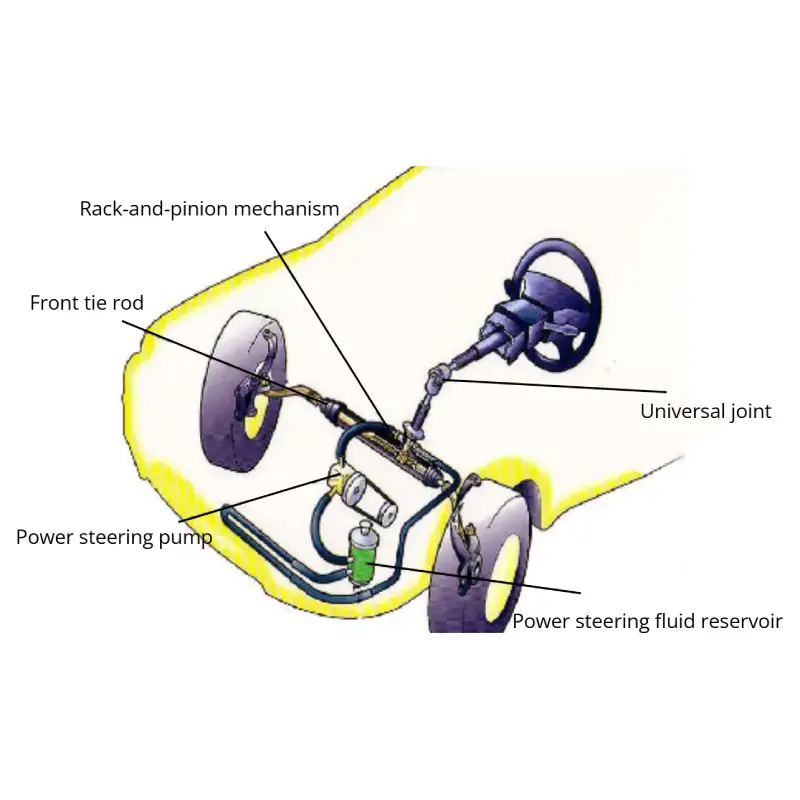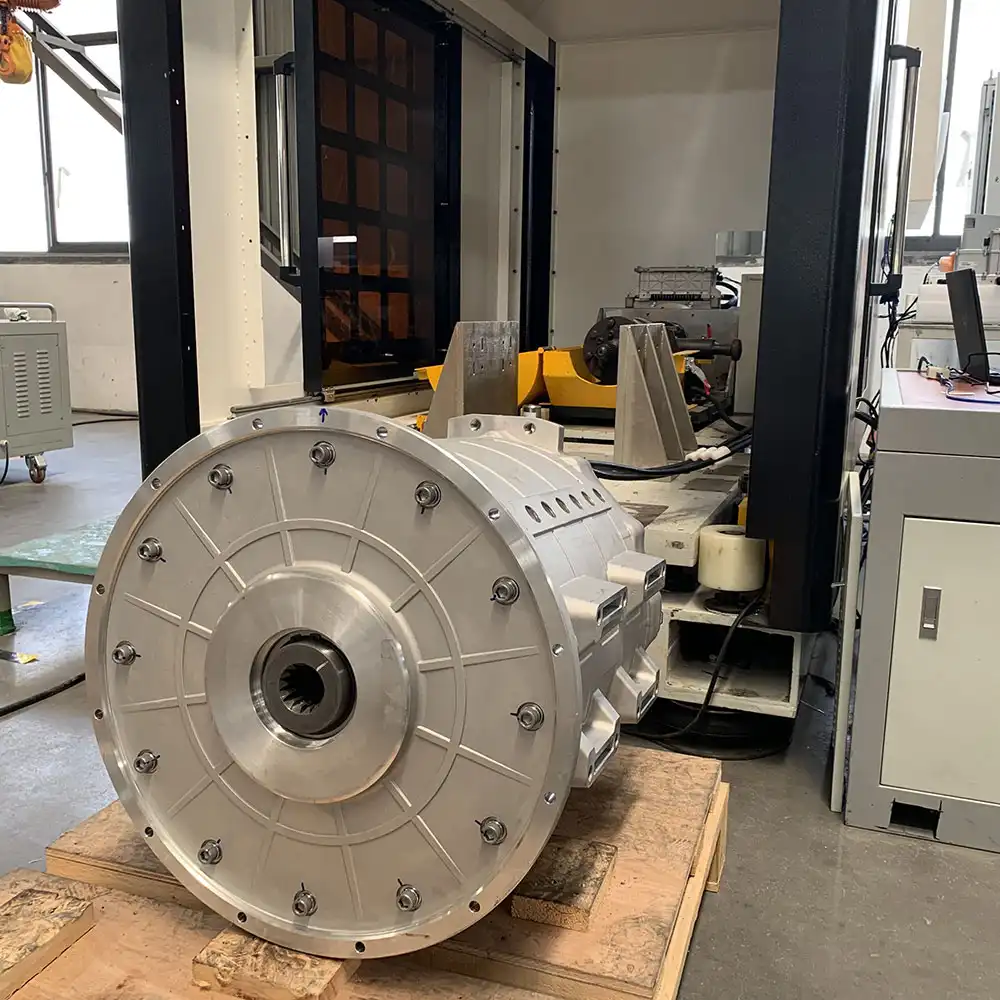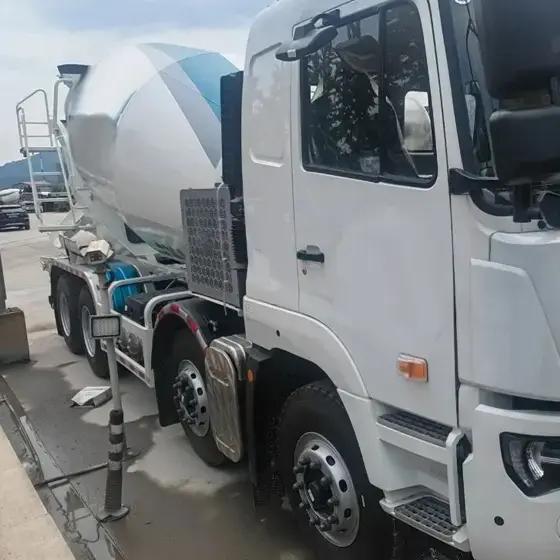E-Axle Explained: Core Structural Components and Their Engineering Roles
1. Introduction: The E-Axle as the Core of Electric Truck Powertrains
As truck electrification accelerates, the e-axle has transitioned from a passive structural member of the chassis into a key subsystem governing propulsion efficiency, durability, NVH, and packaging. With deep integration of the electric motor, reduction gearbox, and drive axle, the components traditionally concealed behind the wheels – such as the axle housing, half shafts, and wheel-end assemblies – now play critical engineering roles in determining the overall performance and reliability of the e-axle.
The axle housing becomes the structural backbone that manages reaction torque, supports cooling and suspension interfaces; the half shaft becomes a dynamic torque-transmitting element with high transient response requirements; and the wheel end serves as the terminal load and torque interface, directly influencing energy recovery, safety, and thermal management.

2. Axle Housing in the E-Axle: Structural Foundation and System Integration Platform
The axle housing is one of the most important structural components in an electric truck e-axle. It supports the vehicle’s static load – body, cargo, and passengers – while also enduring complex dynamic loads including vertical, lateral, braking, and traction forces. These loads fluctuate continuously based on road conditions and driving maneuvers, requiring the axle housing to provide high strength, stiffness, and durability to ensure safety operation of the entire e-axle.
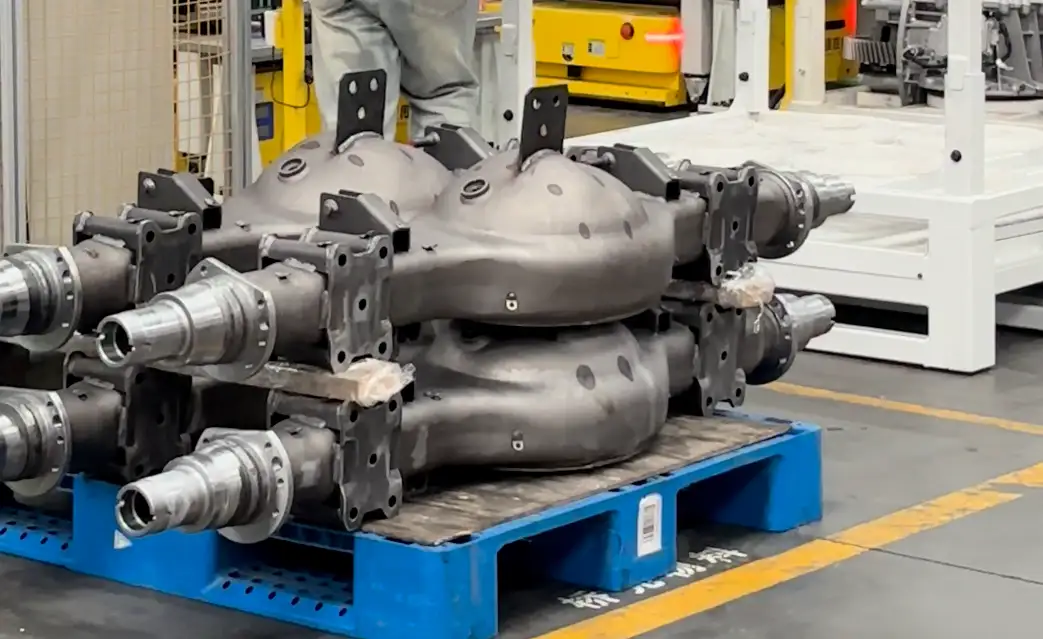
2.1 Structural Types of E-Axle Housings
2.1.1 Integral (One-Piece) Axle Housing
Produced by casting or welding, integral housings are the mainstream solution for heavy-duty truck e-axles.
- Cast one-piece housings offer high strength and stiffness and are widely used in medium- and heavy-duty e-axles. They withstand heavy payloads, high impact loads, and demanding duty cycles.
- Welded one-piece housings provide lightweight construction and manufacturing efficiency, making them suitable for urban delivery vans and light commercial vehicles where mass reduction is critical.
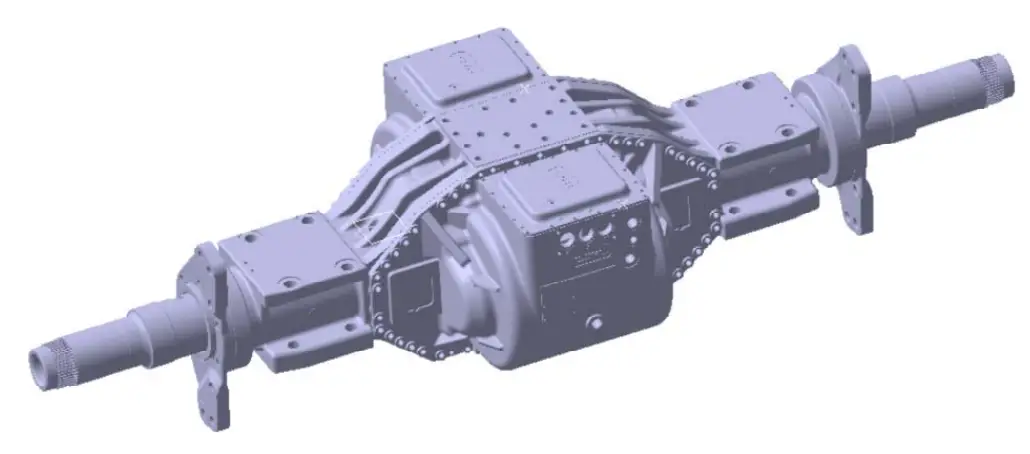
2.1.2 Sectional (Split) Axle Housing
Split housings are assembled using bolts or other fasteners. They are easier to manufacture and service, but due to reduced stiffness and potential joint failure, they are less common in heavy-truck e-axle applications, especially where high loads are involved.

2.2 Materials and Manufacturing Processes
Common materials for e-axle housings include:
- Cast steel – Very high strength and toughness, suited for harsh environments, but more expensive to produce.
- Ductile iron – Offers excellent castability and balanced mechanical performance at lower cost, widely adopted for e-axles.
- Stamped and welded steel plate – Lightweight and material-efficient, frequently used in light-duty e-axles where mass matters.
Manufacturing considerations:
- Casting allows complex geometries and high stiffness, but has a higher cost and longer production cycles.
- Welding enables cost-efficient, high-throughput production but requires strict process control to prevent weld defects that may impact reliability.
3. Half Shafts in the E-Axle: Precision Torque Transmission Components
In an e-axle system, the half shaft transfers torque from the differential (or motor output via reduction gears) to the wheel ends. It must endure not only continuous torque loads but also bending forces and dynamic impacts from uneven road surfaces and steering operations. For commercial vehicles, these conditions are particularly demanding.
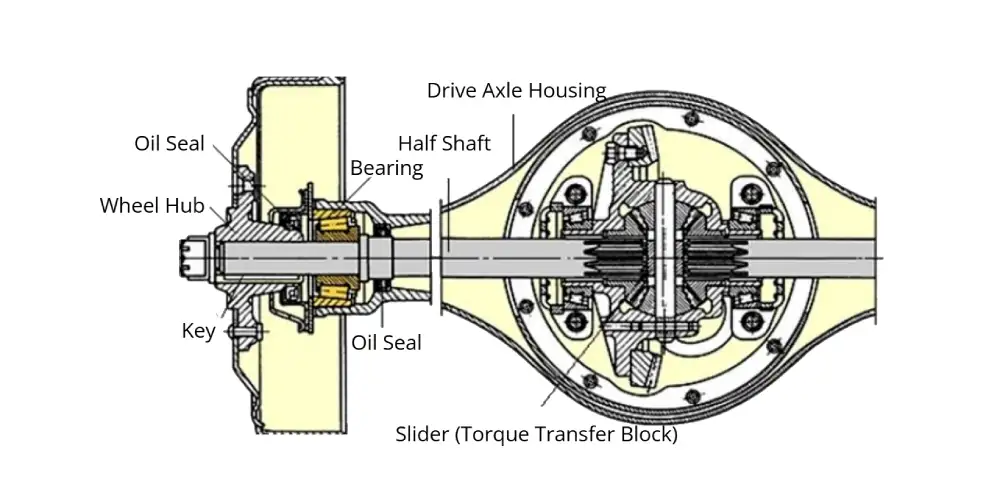
3.1 Half Shaft Types in Truck E-Axles
3.1.1 Full-Floating Half Shaft
The most widely used design in truck e-axles. The wheel hub is supported by two tapered roller bearings on the axle housing, so the half shaft’s sole function is torque transmission. It does not bear vertical or bending loads. This improves fatigue resistance, durability, and reliability – ideal for heavy-duty trucks and high-load electric applications.
3.1.2 Three-Quarter Floating Half Shaft
Transmits torque and needs to withstand part of the bending moment. It’s less common in e-axles due to inferior load performance compared with full-floating designs.
3.1.3 Semi-Floating Half Shaft
Simple and low-cost; it must carry both torque and wheel-induced loads. Used mainly in passenger cars and some light commercial EVs where cost and lightweighting take priority.

3.2 Materials and Manufacturing Processes
Common materials for e-axle half shafts include 40Cr, 42CrMo, and other high-strength alloy steels. Heat treatments such as quenching and tempering significantly enhance strength, toughness, and wear resistance.
Typical manufacturing stages:
- Forging – Improves grain structure and ensures high mechanical strength.
- Precision machining – Ensures dimensional accuracy and fit with differential and wheel-end interfaces.
- Heat treatment – Enhances fatigue resistance and extends service life under harsh EV duty cycles.
4. Wheel-End Assemblies: The Terminal Interface of the E-Axle Drive System
The wheel end is the part that directly connects an e-axle to the wheels and serves as the final stage of the drive system. Its performance has a direct impact on driving safety and handling. The wheel end is primarily composed of the hub, tire, braking components, bearings, and other parts. These components work together to enable vehicle driving, steering, and braking functions.

4.1 Wheel Hub
The hub supports the tire and connects to the half shaft via high-load bearings.
Common materials:
- Aluminum alloy – Lightweight with strong heat dissipation, reducing unsprung mass and improving handling and efficiency. Often used in premium commercial vehicles.
- Steel – High strength and cost-effective, widely used in mainstream trucks and buses.
Hub design must ensure strength, stiffness, and excellent dynamic balance; otherwise, vibration, steering shake, and reduced safety may result.
4.2 Tires
Commercial vehicle tires must offer:
- High wear resistance
- Large load capacity
- Strong grip and puncture resistance
Tire selection must match vehicle’s duty cycle and application:
- Long-haul EV trucks → low rolling resistance, high mileage
- Construction vehicles → puncture-resistant, high-load tire structures
Tire pressure maintenance is essential for both safety and lifespan.
4.3 Brake Systems at the Wheel End
The braking system is a critical safeguard for vehicle safety, allowing the wheels to decelerate or stop quickly when needed. At the wheel end of commercial vehicles, the two commonly used braking types are drum brakes and disc brakes.
- Drum brakes – Simple, cost-effective, high brake torque. Limitations include poor heat dissipation and brake fade under continuous braking.
- Disc brakes – Superior heat management, fast response, and stable braking performance. Increasingly used in high-performance logistics EVs and premium buses.
4.4 Wheel-End Bearings
Bearings play a crucial role at the wheel end by supporting the hub rotation and reducing friction. Commercial vehicle wheel-end bearings are typically tapered roller bearings or cylindrical roller bearings. These designs offer high load capacity and rotational accuracy, enabling them to meet operational demands under various driving conditions.
5. Conclusion
As commercial vehicles transition to electric powertrains, the axle housing, half shafts, and wheel-end assemblies have become key elements shaping the performance and durability of the e-axle. Their structural design, material selection, and manufacturing quality directly influence torque delivery, NVH, safety, load capacity, and thermal performance.
Brogen E-Axle Solutions


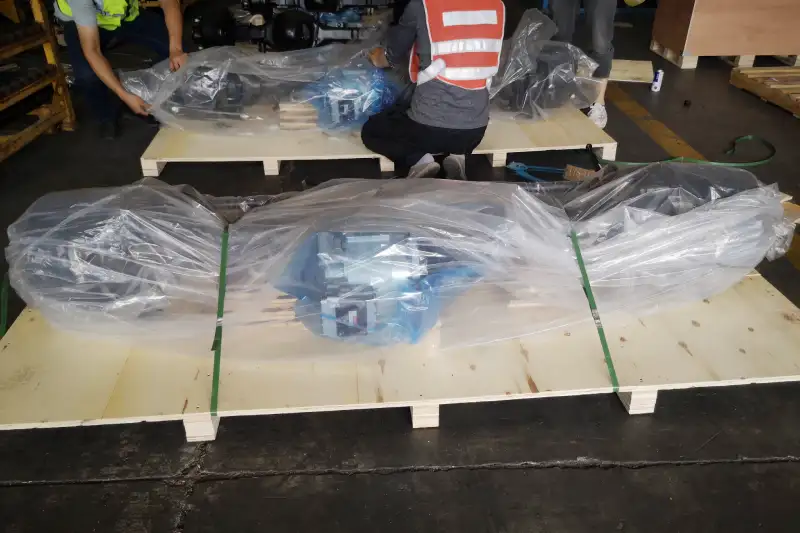
At Brogen, we offer a wide range of e-axle solutions for commercial vehicles, including electric pickup trucks, light trucks, medium- and heavy-duty trucks, buses, and more.
- Learn more here: https://brogenevsolution.com/electric-axle-system/
- Business inquiry: contact@BrogenEVSolution.com
Contact Us
Get in touch with us by sending us an email, using the Whatsapp number below, or filling in the form below. We usually reply within 2 business days.
Email: contact@brogenevsolution.com
Respond within 1 business day
Whatsapp: +8619352173376
Business hours: 9 am to 6 pm, GMT+8, Mon. to Fri.
LinkedIn channel
Follow us for regular updates >
YouTube channel
Ev systems introduction & industry insights >
